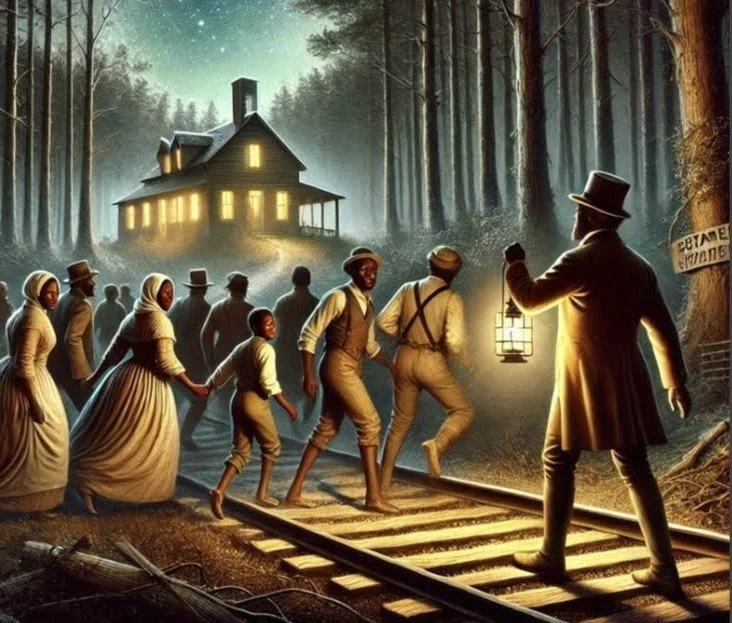Kate Masur is a professor at Northwestern University who specializes in the history of race, politics, and law in the United States. She’s the author of Until Justice Be Done: America’s First Civil Rights Movement, from the Revolution to Reconstruction, a finalist for the Pulitzer Prize in History and a New York Times "critics' pick" for 2021.
Kate led a team of students and staff at Northwestern in the creation of Black Organizing in Pre-Civil War Illinois: Creating Community, Demanding Justice, a web exhibit associated with the Colored Conventions Project.
She regularly collaborates with museums and other nonprofits, including the National Park Service, the National Constitution Center, the Newberry Library, and the Smithsonian Museum of African American History and Culture. She was a key consultant for the 2019 documentary, Reconstruction: America after the Civil War and appeared in the 2021 CNN film, Lincoln: Divided We Stand.
Kate regularly works with K-12 teachers and speaks with the media on topics including the Civil War and Reconstruction, Abraham Lincoln, monuments, and public memory. Her 2010 book, An Example for All the Land: Emancipation and the Struggle over Equality in Washington, DC, was a finalist for the Lincoln Prize. She is co-editor of the Journal of the Civil War Era, published by University of North Carolina Press.
She lives in Evanston, Illinois, with her family.
Robert Colby is an award-winning scholar and teacher of United States history.
His first book, An Unholy Traffic: Slave Trading in the Civil War South (Oxford University Press, 2024), won the Nau Book Prize from the John L. Nau III Center for Civil War History, the 2025 nonfiction award from the Mississippi Institute of Arts and Letters, and was a finalist for the Gilder Lehrman Lincoln Prize.
His work on the domestic slave trade during the Civil War previously won the Society of American Historians' Allan Nevins Prize and the Anthony Kaye Memorial Essay Award and Anne J. Bailey Prize from the Society of Civil War Historians. He was also a finalist for the Southern Historical Association's C. Vann Woodward Award. Originally from Virginia (where he grew up walking Civil War battlefields), he is now an Assistant Professor at the University of Mississippi.
Intersecting Black, Appalachian, & Ohio History: Southeast Ohio’s Underground Railroad
Presenter: Amanda Flowers, Ph.D.
During America’s legal institution of chattel slavery, everywhere enslavement existed there was resistance through escape and flight, as well as deliberate efforts to liberate the enslaved from bondage. While enslavement in Appalachia did not always fit the southern model, it existed in every Appalachian county south of the Ohio River. In turn, the enslaved began escaping to what would become the Ohio Country as late as the mid-1700s; however, only about half of the Ohio population was anti-slavery while the other half was pro-slavery. It was under these conditions that abolitionists formed secretive networks to help the escaped navigate through Ohio to freedom. Then, around 1814 or 1815, a formal Underground Railroad was conceived in southeast Ohio, through which some freedom seekers crossed the Ohio River in Lawrence and Galia counties, making way north to safety at places like Oak Hill, Jackson, or Berlin Crossroads (Jackson County) when headed towards Albany, Athens, Tablertown, or Amesville (Athens County). Those who had crossed in Meigs county, especially, continued their journey through places like Wilkesville and McArthur (Vinton County) before crossing into Athens County. Others crossed the Ohio and Muskingum Rivers or their connecting terrains in Washington County, taking an array of trails through Little Hocking, Belpre, Constitution, Harmar, Marietta, Newport, or New Matamoris, when in route to Cutler, Mayles Ridge, Bartlett, Barlow, Waterford, Rainbow, Stanleyville, or Lower Salem. Freedom seekers traveled further north to Morgan County, seeking safety at Chesterhill, Pennsville, Stockport, Malta, McConnelsville, Ringold, or Deavertown before heading to places like Paynes Crossing, Crooksville, or Rendville (Perry County). This presentation will showcase some of Southeast Ohio’s Underground Railroad sites, routes, agents, conductors, and brave freedom seekers who partook in the arduous journey.
The Fugitive Slave Act and Its Impact on The Underground Railroad In Southern Ohio
Presenter William R. Walker is a retired attorney whose research and lectures focus on the African American in the Civil War and late 19th century African American life in Pomeroy and Athens,Ohio.Currently working on a submission to Ohio Governor in support of a posthumous promotion to Captain of African American Civil War Medal Of Honor recipient Milton Holland and researching Athens residents Andrew Jackson Davison, one of the first African American attorneys in Ohio, and his wife, Eliza Brown Davison, escaped slave who was the house servant of General Goerge Armstrong Custer and Elizabeth Custer.




